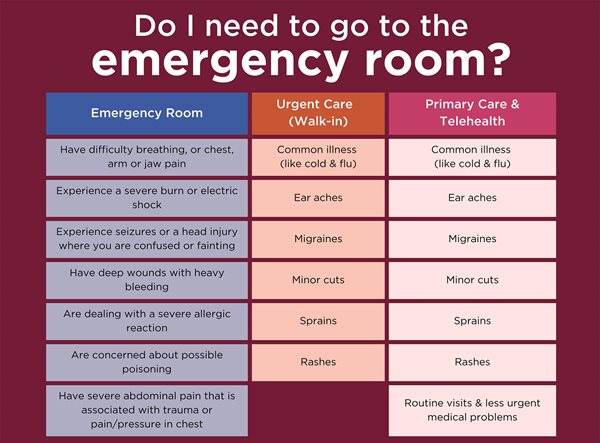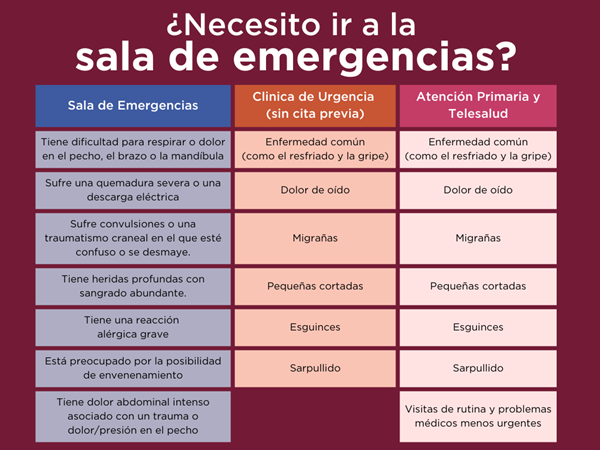When you or a loved one is injured or feeling ill, you want immediate relief. Sometimes that means heading to the emergency room for care — and sometimes it doesn’t.
The last thing you want is to end up in a crowded emergency room if you don’t need to be. But how do you know when to head to the emergency room versus when to seek other care options?
Know your other care options
The first step to be ready for sudden illnesses or injuries is to learn about non-emergency room care options.
Primary care physician
Start by contacting your primary care physician’s office. Your doctor’s office may have same-day appointments available — including phone or virtual appointments, which can be done on a smartphone, laptop or computer, and which give you the option to receive care while remaining at home.
Urgent care (walk-ins)
If you’re unable to see your primary care physician, or if you don’t have one, urgent care walk-in services may also be an alternative to emergency room care. Urgent care clinics offer care on weekends and after-hours — times when your primary care physician may not be available.
How do I know where to go for care?
So how do you know if your injury or illness requires emergency room care or other care?
First and foremost, if you’re experiencing breathing issues or pain in your jaw, arm or chest, seek immediate emergency help. Deep wounds, head injuries, electric shock, trauma, and severe allergic reactions are also conditions that may require a trip to the emergency room.
Alternatively, these are conditions for which you might seek care from your primary care physician or walk-in urgent care:
- Cold and flu
- Strain or sprain
- Rash
- Migraine
- Ear ache
Always err on the side of caution. If your gut is telling you that you need immediate emergency care, it’s better to be safe than sorry. Download this guide to help determine if you need to visit the emergency room, walk-in urgent care or your primary care physician.









